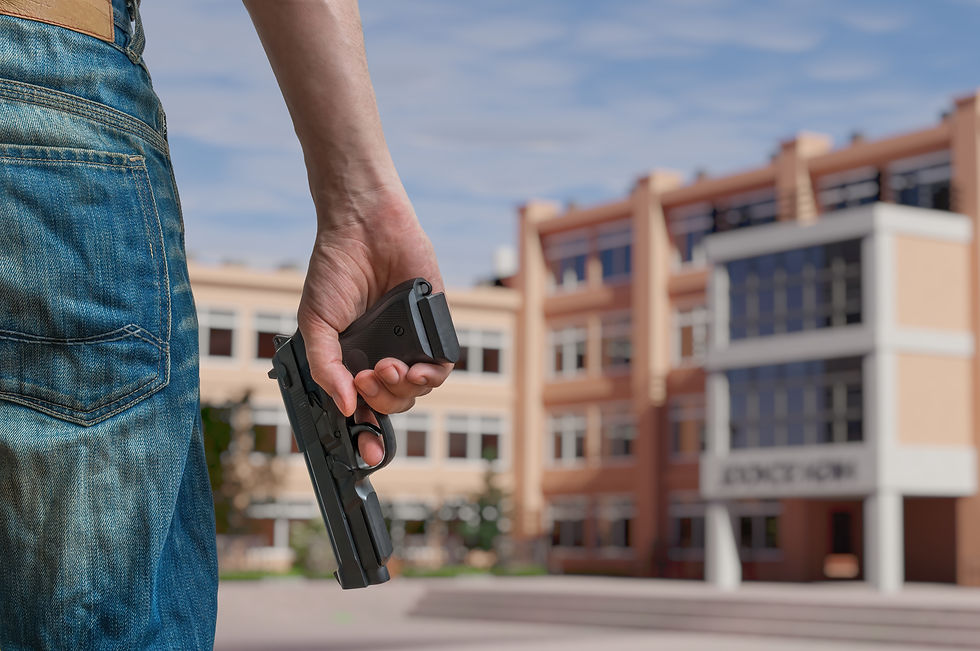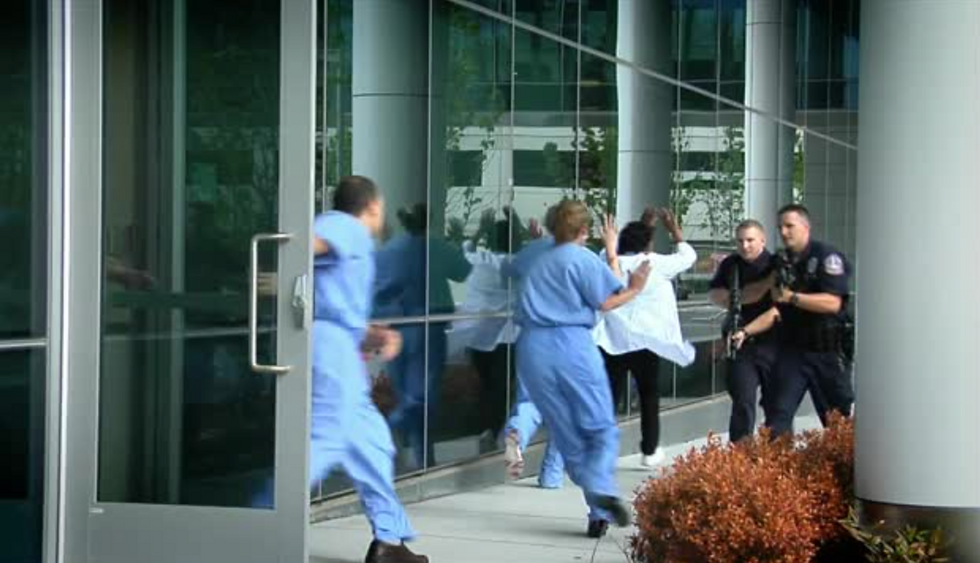Understanding the Mind of an Active Shooter: Insights from Experts
- gene423
- Sep 15
- 5 min read

Understanding the Mind of an Active Shooter: Insights from Experts
When we hear about an active shooter situation, our first instinct is often to seek safety and shelter. But have you ever stopped to wonder what goes through the mind of the shooter? What motivates someone to commit such a heinous act? These are questions that experts in the field of psychology and law enforcement have been grappling with for years. By understanding the mindset of an active shooter, we can better prepare ourselves for the possibility of such an event and potentially even prevent it from happening in the first place.
In this article, we will delve into the insights and perspectives of experts on this topic, shedding light on the complex and disturbing nature of these individuals. From their motivations to their behaviors, we will explore what drives someone to become an active shooter and what we can do to better protect ourselves and those around us.
The Psychology Behind Active Shooters
Active shooters are individuals who engage in killing or attempting to kill people in a populated area. The motives behind these attacks are varied, and they can range from mental illness to ideological beliefs. The psychology behind active shooters is complex and multifaceted, and there is no single profile that fits all perpetrators. However, research has shown that there are some commonalities among them.
According to Dr. Peter Langman, a psychologist who specializes in the study of school shootings, many active shooters share certain personality traits. These include a history of social isolation, feelings of alienation and rejection, and a sense of grievance or injustice. They often have difficulty forming healthy relationships with others and may struggle with depression, anxiety, or other mental health issues.
Despite these commonalities, it is important to note that not all individuals who exhibit these traits will become active shooters. It is only when these factors combine with other risk factors that the potential for violence increases.
Common Characteristics of Active Shooters
While there is no one-size-fits-all profile for active shooters, there are some common characteristics that have been observed in many cases. These include a history of violence or aggression, a fascination with weapons and violence, and a desire for attention or recognition. Many active shooters also have a history of mental illness or substance abuse. Another common characteristic of active shooters is a sense of grievance or injustice. They may feel that they have been wronged or mistreated in some way, and they seek revenge through violence. In some cases, this sense of grievance may be fueled by ideological beliefs or a desire to make a political statement.
Risk Factors Associated with Active Shooters
While not all individuals who exhibit risk factors will become active shooters, these factors have been identified as potential warning signs. Some of the most common risk factors associated with active shooters include a history of violence or aggression, a fascination with weapons and violence, and a history of mental illness or substance abuse. Other risk factors include a history of bullying or being bullied, a history of social isolation or rejection, and a recent loss or trauma. These individuals may also have a sense of grievance or injustice and may have expressed violent or threatening behavior in the past.
Pre-Attack Behaviors and Warning Signs
Active shooters often exhibit pre-attack behaviors and warning signs before carrying out their acts of violence. These behaviors can include increased aggression, an obsession with weapons or violence, and threats or expressions of violent behavior.
Other warning signs may include a sudden change in behavior or demeanor, increased isolation or withdrawal, and a fascination with previous acts of violence or mass shootings. These warning signs may be observed by family members, friends, or coworkers, and it is important to take them seriously and report them to law enforcement.
Prevention and Intervention Strategies
There are several prevention and intervention strategies that can help to mitigate the risk of an active shooter incident. These include early identification and intervention, improved mental health services, and increased security measures.
Early identification and intervention involve identifying individuals who may be at risk for violent behavior and providing them with the support and resources they need to address their underlying issues. This can include mental health counseling, substance abuse treatment, and social support.
Improved mental health services can also help to prevent active shooter incidents by providing individuals with the tools and resources they need to manage their mental health issues. This can include access to therapy, medication, and other treatment options. Finally, increased security measures can help to prevent active shooter incidents by making it more difficult for individuals to access weapons or carry out acts of violence. This can include increased security at public events, the use of metal detectors and bag checks, and active shooter drills and training.
Response Tactics for Dealing with an Active Shooter
In the event of an active shooter incident, it is important to know how to respond quickly and effectively. The Department of Homeland Security recommends the following response tactics:
1. Run: If possible, evacuate the area and get as far away as possible from the shooter.
2. Hide: If evacuation is not possible, find a secure location to hide and lock or barricade the door.
3. Fight: As a last resort, defend yourself and others by using any available means, including improvised weapons or physical force.
It is important to note that there is no one-size-fits-all approach to responding to an active shooter incident. Each situation is unique, and it is important to assess the situation and respond accordingly.
Recovery and Aftermath
The aftermath of an active shooter incident can be traumatic and long-lasting. For survivors and their families, the road to recovery can be difficult and fraught with challenges. It is important to seek support and resources to help cope with the physical, emotional, and psychological effects of the incident.
For communities affected by an active shooter incident, recovery efforts may include counseling and mental health services, memorial services and commemorations, and efforts to improve security measures and prevent future incidents.
Expert Interviews and Insights
To gain a deeper understanding of the mind of an active shooter, we spoke with several experts in the field of psychology and law enforcement. Dr. Peter Langman, a psychologist who specializes in the study of school shootings, emphasized the importance of early identification and intervention in preventing active shooter incidents. He also noted that many active shooters exhibit warning signs and pre-attack behaviors, making it important to take these signs seriously and report them to law enforcement.
Sergeant Jimmie Barrett of the Los Angeles Police Department's Threat Management Unit emphasized the importance of training and preparation in responding to an active shooter incident. He noted that many businesses and organizations are now conducting active shooter drills and providing their employees with the tools and resources they need to respond quickly and effectively.
Conclusion
Active shooter incidents are a tragic and disturbing reality in today's society. By understanding the mindset of an active shooter, we can better prepare ourselves for the possibility of such an event and potentially even prevent it from happening in the first place. While there is no single profile that fits all perpetrators, there are some common characteristics and warning signs that can help to identify individuals who may be at risk for violent behavior.
Prevention and intervention strategies, improved mental health services, and increased security measures can all help to mitigate the risk of an active shooter incident. In the event of an active shooter incident, it is important to know how to respond quickly and effectively, and to seek support and resources to cope with the aftermath.
By working together and taking a proactive approach to preventing and responding to active shooter incidents, we can help to create a safer and more secure society for ourselves and future generations.







Comments